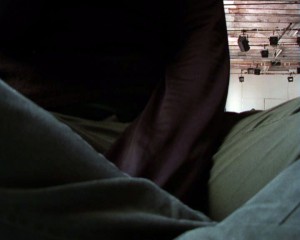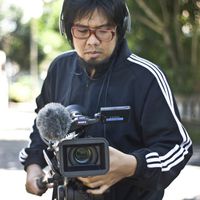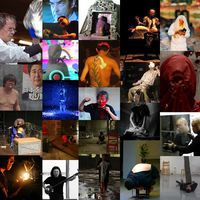The bridges to build in performing arts: utopia or reality? Part 3

The performing arts market
Performing arts can be seen as a product to be marketed, communicated and sold. My focus is on the contemporary and experimental performing arts market where profit is not the motive. Instead, its aim is to ‘provoke’ an audience, to create awareness and critical dialogue in society. There is competition, supply and demand but it is a market that presents critical products made by the most intimate thoughts of human beings. This market does not sell entertainment; it presents personal views that try to educate society in order to have a critical view of the world.
In this market, artists are the providers of art forms, programmers the distributors, the audience are the consumers and government the political facilitators.
In Europe, most professionals (artists and programmers) depend on subventions to work. They need a parental state that defines protective laws for artistic creation. Governments have acknowledged that Art is important for social development and launched calls to help some artists to develop artistic projects. This situation is not quite the same in Southeast Asia. In this region, most countries don’t have a transparent system for supporting arts.
Either way, artists, programmers and audience are the elements that make this market work. Another difference between these regions is censorship. In Europe, it is not as strong as it is in Southeast Asia. Self-censorship is something very common among European professionals, as a commitment to the market. In Southeast Asia, this censorship is regulated by government programmes which forbid certain thematic and scenic presentations, resulting in higher self-censorship than in Europe.
Relationship between programmers and creators
The relationships that exist between artists and programmers can be more or less balanced. In Europe, programmers are seen as very powerful professionals. In Asia, with the exception of Singapore, this is a profession that almost does not exist. In Europe, programmers are responsible for what is seen in the venues or festivals they direct. In Southeast Asia, most of the artists tend to create their own programmes in order to contextualise their work. If in Europe, the choice of the spectator is limited to the vision of each programmer, in Southeast Asia, artists have a big role in their own and their colleagues’ visibility.
In both regions, we find two kinds of programmers: the ones who collect art work according to a programme that aims to please the maximum audience; and the ones who need to develop an artistic programme with aesthetics defined according to their own vision of the world.
Artists demand a lot from programmers in both regions. They see them as mediators between the artists’ work and the audience; and they have to understand the artist’s work and provide them with the correct context for their piece to be presented.
European artists especially tend to demand more from programmers: they have to be very aware of everything, not only the arts sector but also of society. In Southeast Asia, artists are not so hard with programmers. This situation is due to the fact that it is not easy to find programmers in this region. The profession of programmer is very new there. We can say that it was largely promoted when the Esplanade theatre (Singapore) opened in 2005. This signaled the beginning of an era for cultural managers and programmers. At present, it is still a profession under development.
Either way, in both regions, artists want to be closer to programmers, the same way that good programmers want to be closer to artists. They want to establish dialogues and bridges that they lack. In Europe, you can find programmers that want to be closer to the artistic processes; in Asia, you find programmers who are more interested in creating the conditions for artists to work and training to professionalize artists and their managers. On the other hand, in both Asia and Europe, artists would like to have more feedback from programmers about their work, which they miss a lot.
The same way that artists are hard with programmers, programmes are also hard on artists. But programmers are stricter in Asia than in Europe. European programmers prefer not to interfere in the artistic work and all conversations tend to assure that artists have the best conditions to present their work (when this dialogue exists at all). In Southeast Asia, programmers’ interference can be very hard; defining the best methodology to work, proposing changes to the artist’s work, etc. However, more and more artists are able to establish a conversation with programmers and change the initial propositions to something more convenient for them. That is why Southeast Asian artists are more used to accepting commissions than their European colleagues. They feel more relaxed in detouring from the initial proposition into their own ideas.
Both European and Asian programmers are aware of their power. Some try to smoothen its impact, others do not. In small organisations, it is easier for programmers to approach artists, while in the bigger ones, this barrier is harder to overcome. The approach to artists depends a lot on who is programming and the time that this person wants to give to the artist. While in Asia, the artistic community does not necessarily consider people who run theatres as programmers, in Europe if someone is head of a venue, he or she is automatically classified as a programmer.
European programmers have to be at the same time selectors, supporters, producers, politicians, managers and mediators of artists and society. They try to protect artists from the boredom of the bureaucratic machine involved in programming. They do not want artists to know the risk they are taking with some of their choices. But at the same time, European artists do not want to know everything that concerns programming. They just want to present their work. There are artists who try to change this situation and become programmers but when they do so they stop creating. In Europe, programming has to be a full-time job. The situation is the opposite in Southeast Asia. Artists believe that they can contribute a lot into an artistic programme since many of them are also programmers.
European programmers tend to programme through circuits. As travel implies costs, they go to the venues and festivals that defend similar languages. They connect in networks, they meet at festivals and they talk to one another to see what is worth seeing. They prefer not to see videos. The situation is a bit different in Southeast Asia. With the exception of some theatres and events in Singapore, most programmers create their programme based on conversations with artists. As there is little money to travel, each programmer’s travel is very important, in order to know exactly what each artist is doing. The lack of resources existing in Southeast Asia brings programmers and artists closer. But at the same time, artists are not as demanding with programmers as their European colleagues; they accept their power and they try to overstep it by creating their own programming projects, being this festivals or other platforms.
Conclusion
Both artists and programmers are working towards an audience. Working together to generate the correct context to reach this audience is being developed by a strict group of illuminated programmers and artists. Most are still back to back. The precarious situation in Asia makes these bridges real, however, artists in Asia don’t expect much from programmers and this situation relax them, avoiding them from developing a work where their support should be more important. In Europe, the roles of the programmer and of the artist are very well defined. Neither wants to replace the other and they both want to create spaces of conversation that would allow both to understand better each other’s work. Programmers do not need to have an artistic background to programme, but they need to find time in their tight schedule to follow artists’ work and to establish honest and meaningful conversations about their artistic choices. Programmers take full responsibility in supporting arts but they also have to remind themselves that they can not do anything without artists both in Europe and Southeast Asia. On the other hand, artists need to be more aware of what it means to programme. And to demand that people who are running theatres are the people with the right skills and vision to do so.
Mutual curiosity and respect are the basis of a good relationship between programmers and artists. And this is what makes them good professionals and allow them to establish bridges between them. The most important thing is to understand each other’s work. Only in that way is it possible to reach the suitable audience.
Catarina Saraiva is a producer and programmer.
After 10 years at the direction of alkantara in Lisbon, in 2009 she moves to Madrid where she takes a master degree in “Performing Studies Practices and Visual Culture” at the University of Alcalá de Henares. In the frame of this master she initiates the laboratory and research project “Linha de Fuga”, a project which questions the relation between programmer and creator. This project ends with an artistic programme hosted in October by La Casa Encendida, in Madrid. Since September 2010 she’s part of the think tank and development group of El Ranchito, a research project promoted by Matadero Madrid. She collaborated as a dramaturgist in the piece “The Diary of Alice” by Joavien Ng and Paloma Calle. At the present moment she’s also developing a research project on the working methodologies of contemporary performing arts programmers and creators.
Similar content
31 Aug 2013
19 Oct 2016






